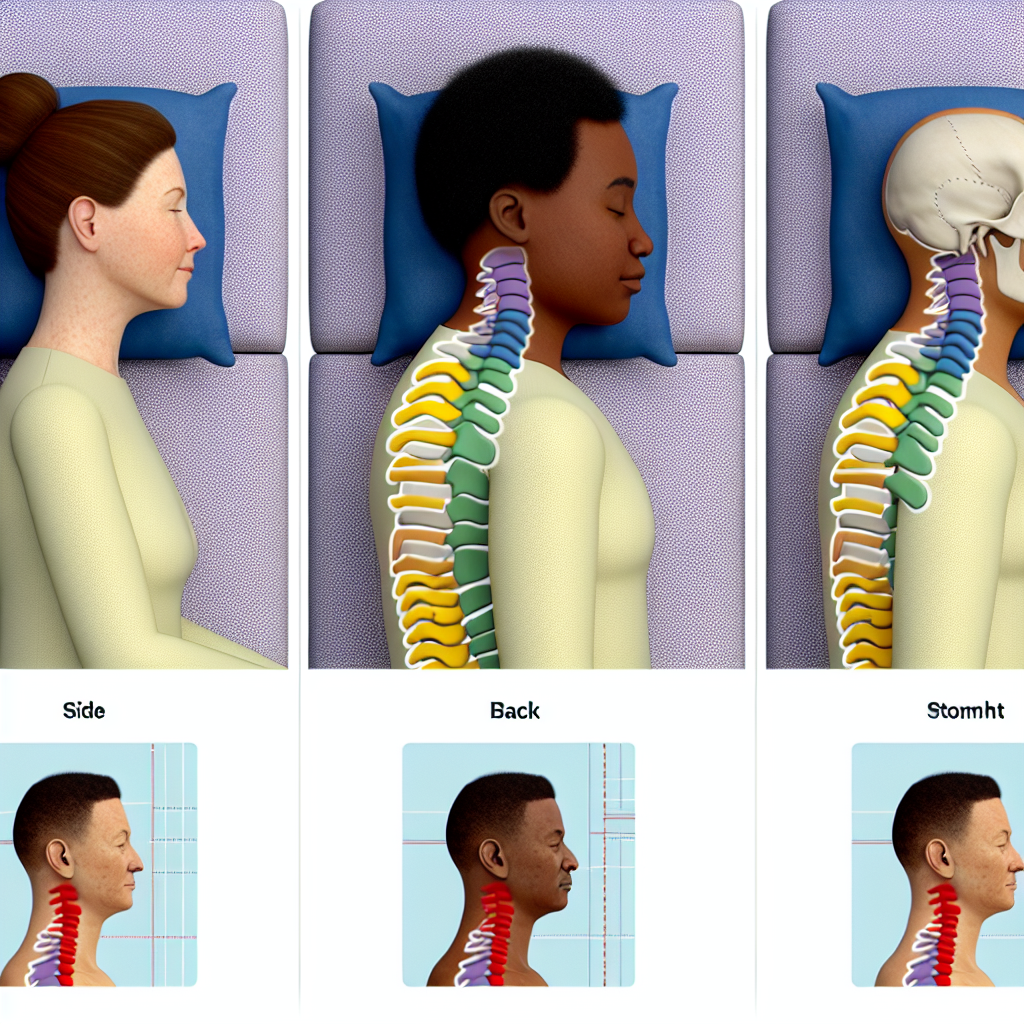Orthopedic Sleep Positions: Spinal Alignment Charts for Side, Back, and Stomach Sleepers
Sleep isn’t just rest—it’s recovery. While many factors influence sleep quality, one of the most overlooked yet crucial elements is spinal alignment. This comprehensive guide explores orthopedic sleep positions, complete with expert-backed insights and alignment charts to help side, back, and stomach sleepers wake feeling refreshed and pain-free.
Sleep Smarter: Why Orthopedic Sleep Positions Matter
Sleep is one of the most fundamental components of physical and mental health, foundational to overall well-being. Yet, for many people, achieving quality rest can be challenging—not simply due to stress or environment—but because of the position in which they sleep.
Orthopedic sleep positions focus on maintaining correct spinal alignment while at rest. The spine, comprising three natural curves—cervical (neck), thoracic (mid-back), and lumbar (lower back)—requires proper positioning to reduce pressure and prevent long-term musculoskeletal complications.
A healthy sleep posture supports these curves, allowing muscles and ligaments to relax and recover. Misalignment during sleep, by contrast, puts unnecessary strain on the spine, which can result in:
– Neck and shoulder stiffness
– Lower back pain
– Joint discomfort
– Impaired breathing (especially in sleep apnea)
Side sleepers can benefit from placing a pillow between the knees. For back sleepers, using a thinner pillow to maintain neck curvature is key. Stomach sleepers, while often discouraged, require ultra-thin support under the pelvic area to reduce lumbar stress.
Modern orthopedic sleep charts, created with input from chiropractors and physical therapists, help people visualize their optimal sleep setup, from pillow height to mattress firmness. These guides help individuals promote proper alignment and prevent common night-time discomforts.
Breaking Down the Science: Research Behind Sleep Positions and Alignment
Orthopedic sleep recommendations aren’t just good advice—they’re backed by solid science.
Side Sleepers: Reduce Pelvic Tilt and Release Lower Back Tension
A 2017 study published in the *Journal of Physical Therapy Science* emphasized that side sleeping without leg support can cause the top leg to pull on the pelvis, creating spinal misalignment. Using a pillow between the knees helps maintain a neutral spine and reduces stress on the lower back.
View the study: Read the full PDF
Back Sleepers: The Gold Standard—But Not for Everyone
According to the *American Chiropractic Association*, back sleeping evenly distributes body weight and minimizes pressure points across the spine when done with proper head and neck support. However, back sleeping can pose challenges for those with obstructive sleep apnea (OSA). In fact, a study in the *American Journal of Respiratory and Critical Care Medicine* found that OSA symptoms may worsen when lying on the back.
Explore the research: American Chiropractic Tips | Sleep Apnea and Position Study
Pillow & Mattress Pairing: What Experts Recommend
Dr. Michael Breus, known as “The Sleep Doctor,” underscores the importance of using medium-firm mattresses and appropriately fitted pillows for spinal realignment. His studies show that choosing the right sleep surface significantly impacts individuals facing chronic pain, especially in the lower back.
Check his advice on mattress and pillow selection: Dr. Breus’ Sleep Insights
Stomach Sleepers: Proceed with Caution
Stomach sleeping remains the most controversial position from an orthopedic viewpoint. The *Cleveland Clinic* warns that it can cause cervical spine rotation and lumbar compression, both of which can lead to chronic strain. Using thin pillows under the pelvis to neutralize the curve can reduce this impact, although switching sleep positions is highly recommended.
Expert analysis: Is It Bad to Sleep on Your Stomach?
See It to Sleep It: Visual Alignment Charts for Every Position
To help individuals optimize their sleep setup, chiropractic and physical therapy professionals have created comprehensive spinal alignment charts. These visuals showcase:
– Ideal pillow elevations and placements
– Joint-angle guidelines for knees, hips, and shoulders
– Mattress firmness suggestions by body type
– Specialized neck positioning tips
– Ergonomic side-sleeping curvature solutions
These charts are now used not only in clinics but also by sleep product designers. Mattress companies like Sleep Number and Tempur-Pedic incorporate this evidence-based knowledge when developing orthopedic sleep solutions, from contour memory foams to position-sensitive zones that accommodate different sleepers.
Sleep for Longevity: Orthopedic Rest for a Healthier Future
Achieving great sleep is about more than simply lying down and closing your eyes—it involves positioning your body in a way that supports spinal health, reduces physical stress, and nurtures recovery during the night.
Orthopedic sleep positions offer a science-backed, proactive way to prevent discomfort, support musculoskeletal health, and improve energy levels during the day. Whether you’re a loyal side sleeper, prefer lying on your back, or occasionally land on your stomach, aligning your spine correctly during rest will change the way you feel, move, and function.
With the support of sleep alignment charts, expert advice, and the right tools for your specific posture, better sleep is within reach. Make spine-conscious positioning part of your nightly routine, and enjoy the long-term benefits of orthopedic rest, night after night.
References
– Journal of Physical Therapy Science: Influence of Sleep Position on Spinal Curvature and Pain
– American Chiropractic Association: Sleep Posture and Back Pain
– American Journal of Respiratory and Critical Care Medicine: Sleep Position and Sleep Apnea
– Dr. Michael Breus – The Sleep Doctor: Pillow and Mattress Selection
– Cleveland Clinic: The Truth About Sleeping on Your Stomach
Concise Summary:
This comprehensive guide explores the science behind orthopedic sleep positions, providing expert-backed insights and alignment charts to help side, back, and stomach sleepers achieve proper spinal alignment for a more restorative and pain-free night’s sleep. With the support of visual guides and evidence-based recommendations, readers can optimize their sleep setup and enjoy the long-term benefits of orthopedic rest.

Dominic E. is a passionate filmmaker navigating the exciting intersection of art and science. By day, he delves into the complexities of the human body as a full-time medical writer, meticulously translating intricate medical concepts into accessible and engaging narratives. By night, he explores the boundless realm of cinematic storytelling, crafting narratives that evoke emotion and challenge perspectives.
Film Student and Full-time Medical Writer for ContentVendor.com




